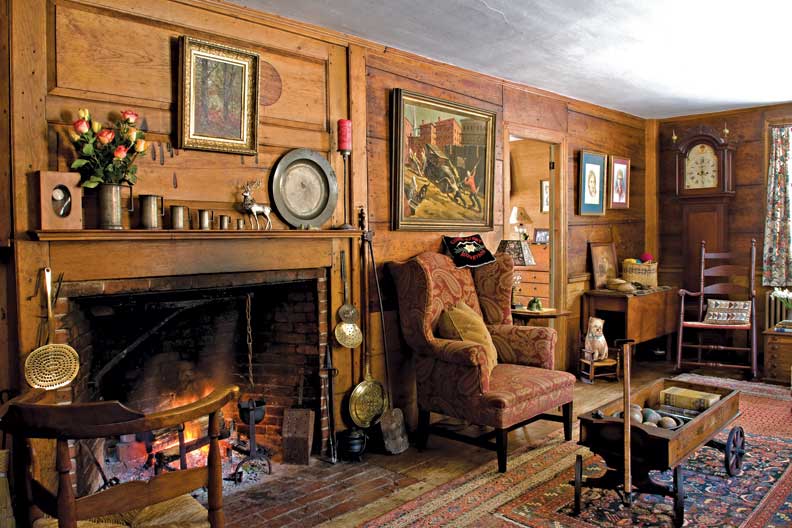Antique fireplaces have long been a fascinating and enchanting aspect of British history. As the focal point of a room, they have played a central role in the design and architecture of British homes for centuries, all while providing warmth and comfort to the inhabitants. This article explores the rich and varied history of antique fireplaces in Britain, delving into their origins, the different styles and materials used over time, and their function in keeping homes warm and cozy.
The Roman Influence
The history of antique fireplaces in Britain dates back to the Roman period when the Romans occupied the island in 43 AD. The Romans introduced the concept of the hypocaust, an early central heating system, which featured underfloor heating and channels built into the walls. This system would carry heat from a furnace or boiler room to different parts of the house, which meant that fireplaces were not the primary source of warmth during this time. However, the hypocaust system did not survive the fall of the Roman Empire, and the British soon returned to open fires in their homes.
The Medieval Period
Fireplaces during the medieval period were large, open structures built directly into the walls. They were primarily made of stone and were situated in the center of the great hall, which served as the main living area for a family. During this time, fireplaces were essential for cooking and heating purposes, and thus were purely functional rather than decorative. Large smoke hoods or chimneys were used to draw out the smoke and soot, though they were not always entirely effective.
Tudor and Elizabethan Fireplaces
The Tudor and Elizabethan periods marked a change in fireplace design, with ornate carvings and intricate detailing becoming increasingly popular. Fireplaces were made from local materials such as limestone, marble, and sandstone, reflecting the wealth and status of the homeowner. The fireplace’s function shifted to become a symbol of opulence and prestige, often displaying the family’s coat of arms or emblem.
Jacobean Fireplaces
Jacobean fireplaces were characterized by their symmetry and more restrained decoration compared to their Tudor and Elizabethan counterparts. Often made of oak, these fireplaces featured intricately carved panels and pilasters, and their mantels typically displayed motifs such as acorns, fruit, and foliage. By this time, the chimney had become more efficient, allowing for more sophisticated fireplace designs that prioritized aesthetics alongside functionality.
Georgian Fireplaces
The Georgian period was a time of architectural elegance and refinement, which was reflected in the fireplaces of the era. Georgian fireplaces were typically more streamlined and minimalist, with simple carved lines and understated detailing. Neoclassical elements such as swags, urns, and festoons began to appear in the designs, and materials like marble and statuary became increasingly popular. The use of cast iron also emerged, leading to a wide variety of fireplace inserts and decorative grates.
Victorian Fireplaces
The Victorian era brought about a revival of earlier styles, with fireplaces drawing inspiration from Gothic, Tudor, and Elizabethan designs. Victorian fireplaces were often highly ornamented, featuring intricate carvings, tiles, and metalwork. The advent of mass production enabled greater access to ornate fireplaces for the general population, and cast iron became a popular material for producing detailed, yet affordable designs. These fireplaces often featured decorative tiles, rich colors, and an assortment of patterns, reflecting the eclectic nature of the period.
Edwardian Fireplaces
The Edwardian period marked a return to simplicity and elegance, with fireplaces becoming less ornate and more refined. Edwardian fireplaces often featured wooden mantels with carved or inlaid details, while marble and limestone were also popular materials. Art Nouveau and Arts and Crafts influences can be seen in the designs, with the use of stylized floral patterns, flowing lines, and organic motifs. The fireplaces of this era tended to be smaller and more compact, reflecting the shift towards more modest and comfortable homes rather than grand, imposing mansions.
The 20th Century and Beyond
Throughout the 20th century, antique fireplace styles continued to evolve as tastes and technology changed. During the Art Deco period, fireplaces featured clean lines, bold geometric shapes, and a sleek, modern aesthetic. In contrast, the mid-century modern movement saw fireplaces with more organic and curvaceous designs, often incorporating materials like brick and stone.
As central heating became more widespread, the functional necessity of fireplaces diminished, leading to a greater focus on their decorative aspect. Despite this, the charm and allure of antique fireplaces have endured, with many people seeking to incorporate these historical designs into their homes for their warmth, beauty, and connection to the past.
Conclusion
The history of antique fireplaces in Britain is a fascinating journey through time, highlighting the myriad of styles, materials, and functions these architectural features have held throughout the centuries. From the primitive and functional designs of the medieval period to the opulent and decorative styles of the Victorian era, antique fireplaces have played an essential role in shaping British homes and interiors. Today, also thanks to expert antique fireplaces craftsmen such as Thornhill Galleries, they continue to be cherished for their charm, character, and ability to evoke a sense of warmth and comfort in any space.
